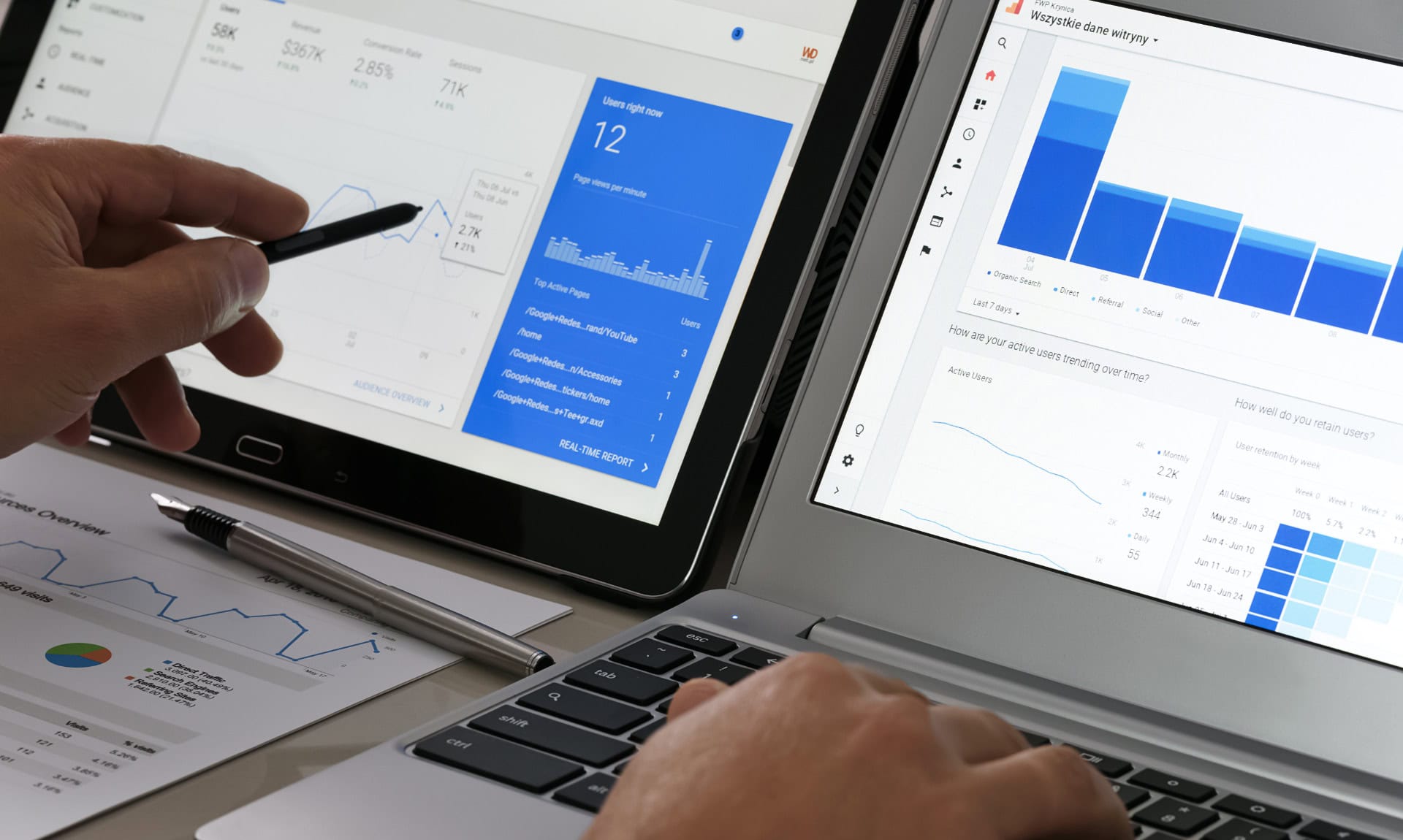
Performance Marketing: Complete Guide for 2024
Performance marketing has revolutionized the way businesses approach advertising, focusing strictly on results to optimize their spending. But, there’s a lot to learn before implementing a performance marketing campaign for your business.
In this article, we’ll discuss what performance advertising is, how it works, best practices, and much more.
What Is Performance Marketing?
Performance marketing is a digital advertising strategy where businesses only pay for marketing when specific actions, such as a sale, lead, or click, are completed.
This approach ensures that marketing budgets are spent efficiently, as payments are directly tied to the actual performance of the ads. It allows for real-time measurement and optimization of campaigns, making it a highly attractive option for companies seeking tangible ROI.
Before we continue, it’s important to note that this article focuses on performance marketing, broadly. If you have a specific focus on B2B, we recommend you read our article on B2B performance marketing.
Performance Marketing vs Brand Marketing
Again, performance marketing targets measurable, immediate results allowing advertisers to optimize spend around specific achievements.
In contrast, brand marketing seeks to enhance reputation and emotional connections with consumers, often prioritizing long-term brand equity over immediate financial returns.
- Learn more about performance marketing vs brand marketing.
Performance Marketing vs Growth Marketing
In performance advertising, success is clearly measured and costs are aligned with outcomes.
On the other hand, growth marketing extends beyond immediate results, employing a broader range of strategies including A/B testing, SEO, content marketing, demand generation, and data analytics to drive sustainable growth across various stages of the customer lifecycle.
- Learn more about performance marketing vs growth marketing.
Performance Marketing vs Digital Marketing
Performance marketing is a subset of digital marketing that is strictly ROI-driven.
Digital marketing encompasses a wider spectrum of online marketing tactics and strategies, including social media marketing, SEO, email marketing, and more, aimed at broader objectives like brand awareness and engagement in addition to direct sales.
- Learn more about performance marketing vs digital marketing.
Benefits of Performance Marketing
Performance marketing offers distinct advantages that make it an appealing choice for businesses aiming to optimize their advertising efforts.
1. Cost-Effectiveness
Performance marketing is economically advantageous because advertisers only pay for ads that achieve their intended outcome, such as a sale or lead, ensuring that budgets are only spent on successful interactions.
2. Measurable ROI
Every dollar spent in performance marketing is tracked, allowing for precise calculation of return on investment. This clarity makes it easier for marketers to understand which strategies are working and adjust their spending accordingly.
3. Highly Targeted Advertising
This method uses advanced targeting techniques based on user behavior, demographics, and online activities, ensuring that ads are shown only to the most likely prospects. This increases the likelihood of achieving the desired action from a highly relevant audience.
4. Flexibility and Scalability
Performance marketing campaigns can be easily adjusted based on their success and the insights gained from real-time data. This flexibility allows businesses to scale successful campaigns upward quickly or modify those not meeting performance benchmarks.
5. Low Risk
Since payment is contingent upon achieving predefined goals, there is minimal financial risk involved with performance marketing. This makes it an ideal strategy for companies cautious about overextending their marketing budgets.
How Does Performance Marketing Work?
Performance marketing demystifies advertising spend by linking costs directly to results, creating a transparent and accountable marketing environment. Here is a high-level step-by-step process of how it works:
- Step 1 – Establishing Objectives: First, marketers define clear, actionable objectives for the campaign, such as increasing sales, generating leads, or boosting website traffic.
- Step 2 – Choosing the Right Channels: Next, the appropriate advertising channels are selected based on where the target audience spends their time. Options may include social media platforms, search engines, connected TV platforms, affiliate networks, or email marketing.
- Step 3 – Creating Compelling Content: Marketers then develop engaging and persuasive content tailored to the channel and audience, designed to trigger the desired action.
- Step 4 – Implementing Tracking Mechanisms: To measure success accurately, tracking tools and software are set up to monitor interactions and conversions linked to each campaign.
- Step 5 – Optimization and Adjustment: As data flows in, performance marketing campaigns are continuously analyzed and optimized. Adjustments are made in real-time to improve results, such as changing ad copy, modifying targeting, or reallocating budgets.
- Step 6 – Evaluation and Scaling: Finally, the performance of the campaign is evaluated based on the set objectives. Successful strategies are scaled to maximize reach and profitability, while underperforming areas are reworked or discontinued.
Performance Marketing Channels
Performance marketing focuses on highly measurable and adjustable channels to optimize advertising spend effectively. Here are three performance marketing channels commonly used:
- Social Media Marketing (SMM): Platforms like Facebook, Instagram, and LinkedIn allow advertisers to target highly specific demographics and measure results based on user engagement, click-through rate, and conversions.
- Search Engine Marketing (SEM): This involves paid advertising via search engines such as Google Ads and Bing Ads, where advertisers can bid on keywords and pay per click, directly correlating spending with website traffic.
- Over-The-Top (OTT) Advertising: OTT advertising and CTV advertising on platforms like Netflix, Hulu, and Amazon Prime Video, where streaming ads are served to viewers over the internet bypassing traditional cable, broadcast, and satellite television platforms. Performance is measured based on viewer engagement and specific interaction metrics. Learn more about OTT and CTV.
To add additional clarity, if your advertising budget cannot be directly tied to an outcome, it’s not technically considered a performance marketing channel. Therefore, SEO, although commonly referred to as one, is not a performance marketing channel.
Performance Marketing Metrics and Measurement
In performance advertising, effectively monitoring and evaluating key marketing metrics and KPIs is crucial for optimizing campaign outcomes and ensuring financial efficiency.
- Cost Per Acquisition (CPA): Measures the cost to acquire a customer who completes a purchase, directly tied to sales performance.
- Return on Advertising Spend (ROAS): This metric calculates the gross revenue generated for every dollar spent on advertising.
- Cost Per Lead (CPL): Tracks the cost associated with generating a potential customer who has shown interest in the product or service.
- Cost-Per-Click (CPC): Indicates the price paid for each click in a PPC campaign, reflecting the cost-effectiveness of targeted ads.
- Click-Through Rate (CTR): The percentage of people who click on an ad relative to the number who viewed it, gauging ad attractiveness and relevance.
- Conversion Rate: The percentage of users who complete a desired action against the total number of clicks, crucial for measuring campaign effectiveness.
- Customer Lifetime Value (CLV): Estimates the total revenue a business can expect from a single customer over the duration of their relationship.
- Sales Conversion Rate: Specifically tracks the percentage of visitors who end up purchasing, essential for direct sales campaigns.
- Engagement Rate: Measures the level of interaction (clicks, shares, comments) with content, important for campaigns aimed at increasing engagement.
- Cost Per Thousand Impressions (CPM): Reflects the cost of 1,000 impressions on an advertisement, useful for understanding the expense of reaching a wide audience.
Performance Advertising Best Practices
To maximize the effectiveness of your campaign, marketers must develop a performance marketing strategy that ensures optimal engagement and ROI from their campaigns.
- Set Clear Objectives: Begin with definitive, measurable goals that align with business objectives, such as increasing sales, generating leads, or boosting brand awareness.
- Choose the Right Channels: Select programmatic advertising channels that best reach your target audience and align with your campaign goals, whether through SEM, SMM, or OTT platforms.
- Use Advanced Targeting: Employ sophisticated targeting options available on digital platforms to reach specific demographics, interests, and behaviors, maximizing the relevance of your ads.
- Create Compelling Creative: Design ads that grab attention and encourage interaction, using clear messaging, appealing visuals, and strong calls to action.
- Implement Robust Tracking: Utilize tracking tools to measure the performance of your campaigns across various metrics. This data is critical for understanding effectiveness and making informed adjustments.
- Test and Optimize: Regularly test different aspects of your campaigns, from ad copy to targeting strategies, and use the results to optimize for better performance.
- Focus on Retargeting: Implement retargeting strategies to re-engage users who have shown interest but have not yet converted, increasing the chances of conversion.
- Maintain Budget Flexibility: Be prepared to adjust your spending based on campaign performance, reallocating the budget to high-performing ads and cutting losses on underperforming ones.
- Stay Updated with Trends: Keep abreast of the latest digital marketing trends and technologies to continually refine and update your strategies, ensuring they remain effective.
- Prioritize User Experience: Ensure that all touchpoints and interactions within the campaign are user-friendly and enhance the overall customer experience, as this can significantly impact conversion rate and overall campaign success.
Performance Marketing Examples
Top brands across various industries have successfully leveraged performance marketing platforms to drive significant returns on investment. Some examples of performance marketing campaigns include:
- Netflix: Uses OTT advertising to promote new series and films directly on its platform, ensuring that promotions are seen by viewers most likely to engage, based on their viewing history and preferences.
- Nike: Leverages SEM to capture consumer interest at the moment of search; their Google Ads campaigns are specifically targeted to users searching for athletic gear, driving both clicks and conversions with high intent.
- Zara: Employs SMM on platforms like Instagram, where they showcase new collections through targeted ads that not only reach a broad audience but also engage users by encouraging them to shop directly from their posts.
- Spotify: Harnesses the power of OTT advertising by offering tailored ads within its free subscription tier, presenting music and podcast promotions that align with the listener’s genre preferences and listening habits, effectively encouraging upgrades to premium plans.
- Samsung: Utilizes SMM by creating dynamic ads on Facebook that showcase the latest smartphone features. These ads are specifically tailored to tech enthusiasts and previous customers, driving direct engagement and conversions through highly personalized content.
Performance Marketing: Final Thoughts
Performance marketing stands out as a crucial strategy for businesses seeking tangible results from their advertising investments. By focusing on measurable outcomes, companies can optimize their campaigns for efficiency and effectiveness, ensuring that every dollar spent contributes directly to their bottom line.
As digital landscapes evolve, embracing performance advertising will continue to be essential for businesses aiming to drive growth through targeted, results-driven advertising strategies.
News Via Inbox
Get our monthly report on all the latest and greatest trends in digital marketing.



